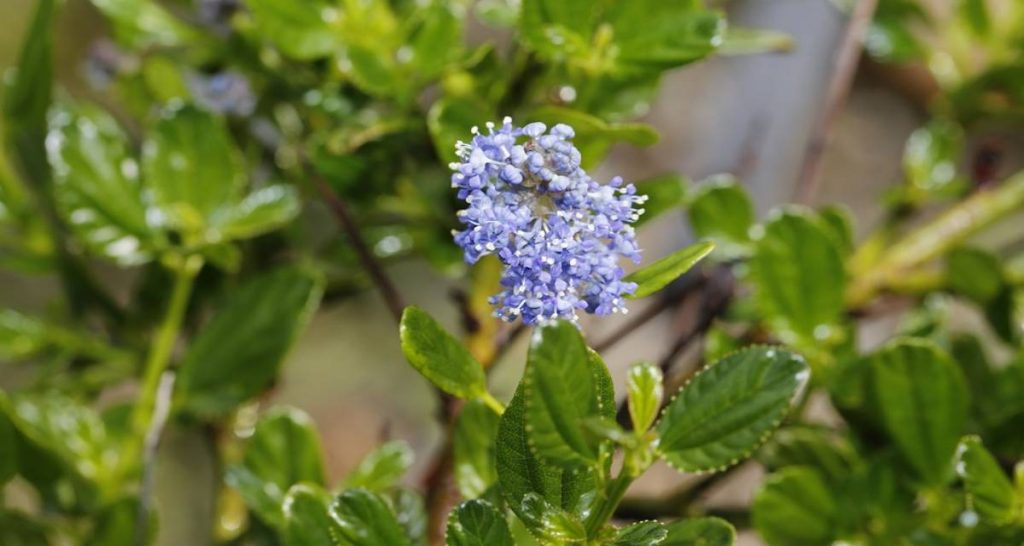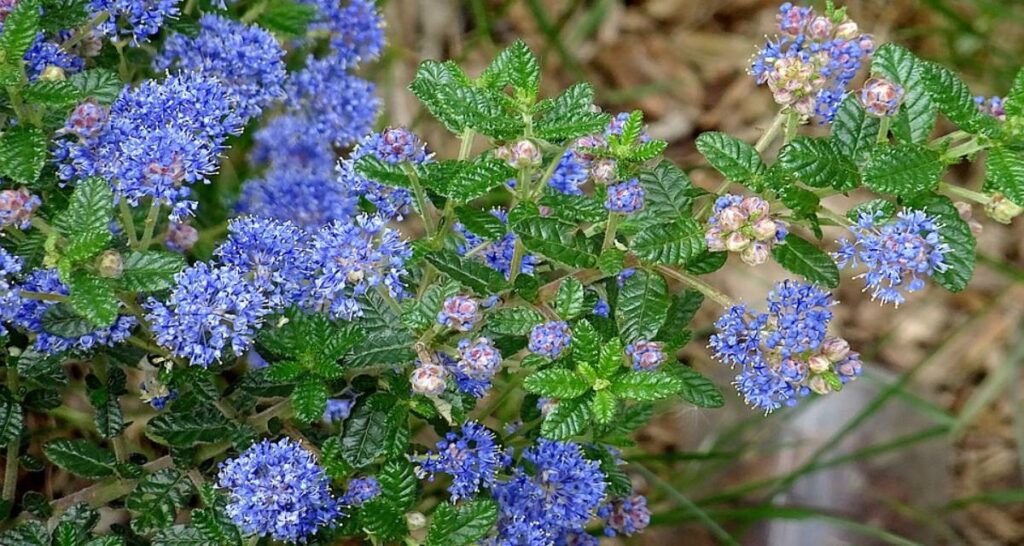If you are interested in giving a bright blue look in your gardenone of the best options you have is the California lilac (genus Ceanothe). In this genus we can find approximately 50 shrubs tolerant to lack of water, with a spectacular bloom that will fill your garden with pollinating insects.
Most species of Ceanothe they are evergreen shrubs (they do not lose their leaves in winter), although deciduous varieties can also be found, especially for cold climates.
These Ceanothe they can be stand independently or create a range such as border plants or hedges. Many gardeners choose to breed certain cultivars for climbing walls, fences, or even door arches.
Ceanothe they are fast growing shrubs but they are not long-lived species. Hardwoods live between 10 and 15 years (although sometimes it’s longer), and evergreens can a little less.
Contents
main species of Ceanothe
Genre Ceanothe it is home to a wide variety of species of different sizes and growing conditions. Evergreen species are much more common to find, but finding a deciduous variety is almost mandatory in very cold climates. Some varieties of this genus are as follows:
- Ceanothus thyrsiflorus var. rethink: a very hardy evergreen that grows well covering horizontal spaces. Very often, you will see it cascading over low walls.
- Ceanothus thyrsiflorus (Lark): This shrub grows well in poorly drained soils and in areas with cooler temperatures. In addition, its flowering period is long.
- Ceanothus × deliléanus (Glory of Versailles): This deciduous shrub features bright green foliage and individual pale blue flowers, displaying them throughout summer and into fall.
- Ceanothus impressus ‘Shell’: one of the most popular evergreen hybrids, easy to adapt and very hardy. It can reach 3 meters in height and its flowering begins at the end of spring. The branches cascade, making it an ideal species as a wall shrub.
Care of Ceanothe (California Lilac)
The species Ceanothe they are easy to plant in any type of Mediterranean or continental garden. However, they must be protected from strong winds and intense cold (frost).
They are usually planted in front of a wall with South orientation, because they are better protected. In general, most shrubs of the genus Ceanothe need full sun, soil with good drainage and little irrigation water.
As for their upkeep, they don’t require (and don’t tolerate) intense pruning very well. Be sure to plant your bush in an environment that will have enough space once it reaches adult size.
light needs
The location in full sun is the best ideal option for Ceanothealthough afternoon shade can be an attractive option, especially in hotter southern regions. Watch out for excessive shadowsbecause this will particularly affect flowering.
temperature and humidity
Most species of Ceanothe They are adapted to the warm environments of the Mediterranean and the West Coast of the United States (such as California), so they do well in climates with mild, wet winters (typical of coastal areas) and hot, dry summers.
However, if you cannot take advantage of these conditions, the deciduous species are more resistant and they can withstand the scourge of wind and low temperature with greater temper. compared to evergreens.
the type of soil
Ceanothe It adapts very well to most soil types and textures, but always as a conditioning factor they are well drained. They prefer light fertile soils, so the ideal is to avoid very clayey textures. will also have to monitor calcareous soilswhere micronutrient deficiencies, especially iron, usually appear.
If the drainage is not adequate, you can locate your Ceanothe on a mound or slope to promote increased runoff. It is also advisable to add organic matter (compost or manure) to improve the soil and promote better drainage.

how to water Ceanothe
the bushes of Ceanothe Newly planted, they require regular, deep watering, but once they have adapted to their environment, they are drought tolerant and accustomed to warm environments.
During prolonged periods of heat and dryness, typical of summer, it may be necessary provide additional watering to promote growth and maintain a beautiful bloom. This shrub prefers deep, scaled watering over time rather than keeping the substrate constantly moist.
Therefore, the most recommended Ceanothe is to let the soil dry out between each watering.
Use of fertilizer
These shrubs do well in poor, infertile soil conditions, having developed natural abilities to fix atmospheric nitrogenthey therefore generally do not need fertilizer.
Unless she needs a boost in vigor or you notice she’s having poor flowering (and you’ve already ruled out that it’s not due to lack of light), you can provide a granular fertilizer. complete, such as this NPK fertilizer. Provides between 200 and 300 grams per bush every 45 days during the spring and summer months.
It is also advisable to cover the base with a organic matter mulch (compost or manure), at a rate of 3 to 4 kg per plant, around the main stem.
spread of Ceanothe
Ceanothe they are relatively easy to propagate by cuttings and the new species generally flower from the 2nd or 3rd year.
The ideal for its propagation is to look for semi-mature cuttings of growth of the season, once the flowering in summer or autumn has passed. For deciduous species, select newly grown softwood cuttings from stem tips that did not flower in the spring.
Soak the cutting in water with rooting hormones (not necessary, but helps a lot) and place it in a warm, humid environment. Ceanothe requires a growing season to root well before planting, usually 4-6 weeks.
Main pests and diseases
One of the great attractions of this type of species is that they are not frequently affected by serious pests or diseases. The attack of insects, mainly scale insects, usually occurs with the change in temperature or they are easily eliminated if we apply a contact insecticide or simply potassium soap.
Main problems of the culture of Ceanothe
Ceanothe It is a genus of shrubs and trees that are generally easy to grow, but in some cases certain problems may appear, usually due to causes related to the location of the plant in our garden.
- Heavy, poorly drained soils can cause root rot.
- Calcareous soils can generate yellowish foliage, usually caused by a lack of iron (ferric chlorosis), manganese or zinc.
- If the environment is affected by strong winds or low temperatures, physical damage such as loss of foliage and flowers, broken branches, etc. can occur.
